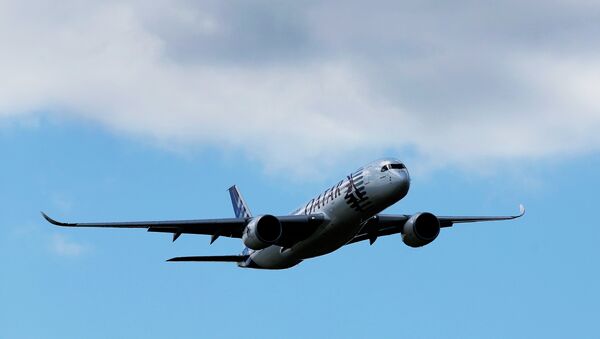Stratesys, the manufacturer of the fused deposition modeling [FDS] 3D printing system used by Airbus to produce parts, said the technology, delivered in December 2014, has been used to produce 3D printed parts "to increase supply chain flexibility, enabling Airbus to meet its delivery commitment on time."
Stratasys Additive Manufacturing Chosen by @Airbus to Produce 3D Printed Flight Parts for its A350 XWB Aircraft http://t.co/FbpuM6F1Rf
— Stratasys (@Stratasys) 6 мая 2015
"This enables Airbus to manufacture strong, lighter weight parts while substantially reducing production time and manufacturing costs," said the company in a statement, adding that the printer uses ULTEM 9085 thermoplastic resin, which "provides high strength-to-weight ratio and is FST [flame, smoke, and toxicity] compliant for aircraft interior applications."
3D printing, or additive layer manufacturing, is the process by which objects are made from a fine base material powder, with thin layers of material added incrementally according to computer-aided design information. The process is to the opposite of traditional techniques such as subtractive manufacturing, in which raw material is cut away into a desired final shape, akin to making a sculpture.
"We are on the cusp of a step-change in weight reduction and efficiency – producing aircraft parts which weight 30 to 55 per cent less, while reducing raw material used by 90 per cent," said Peter Sander, Airbus' Head of Emerging Technologies. "This game-changing technology also decreases total energy used in production by up to 90 percent compared to traditional methods."
"The aircraft of the future will have a 'bionic' fuselage, composed of complex parts printed using additive layer manufacturing," said Sander, explaining that the possible applications of the technology are just beginning to be realized, including solutions for spare parts, for which the lead time between order and delivery could be as little as one day.



